Our Top 5 Speed Secrets Powering our Web Hosting Solutions
At HostStage we consciously designed our shared web hosting offers with strong technical choices that provides the best level of performances. We keep blowing our clients away by its simplicity but more importantly the level of performances.
Yet, we have been asked to give further details on our offer and the “under the hood” technologies featuring our web hosting solutions.
While we wouldn’t reveal all our secrets and server side enhancements, throughout this case studies we will still expose our whole methodology and technical choices.
I) The Impressive Hardware Selection
The first stone when designing a web hosting offer is the hardware selection. Among the wide choices, the goal is to select the best production ready hardware.
Disk wise, we have jumped on the SSD NVMe technical breakthrough which delivers outstanding performances. It solved the main bottleneck we had encountered over the last decade because of limited Disk IOPS / Write / Read speed.
All our shared hosting servers were instantly scheduled to be upgraded over the SSD NVMe technologies across all our locations as soon as we became aware of the performance gain.
Here is a benchmark asserting of the technical difference between our historical drives we used to use:
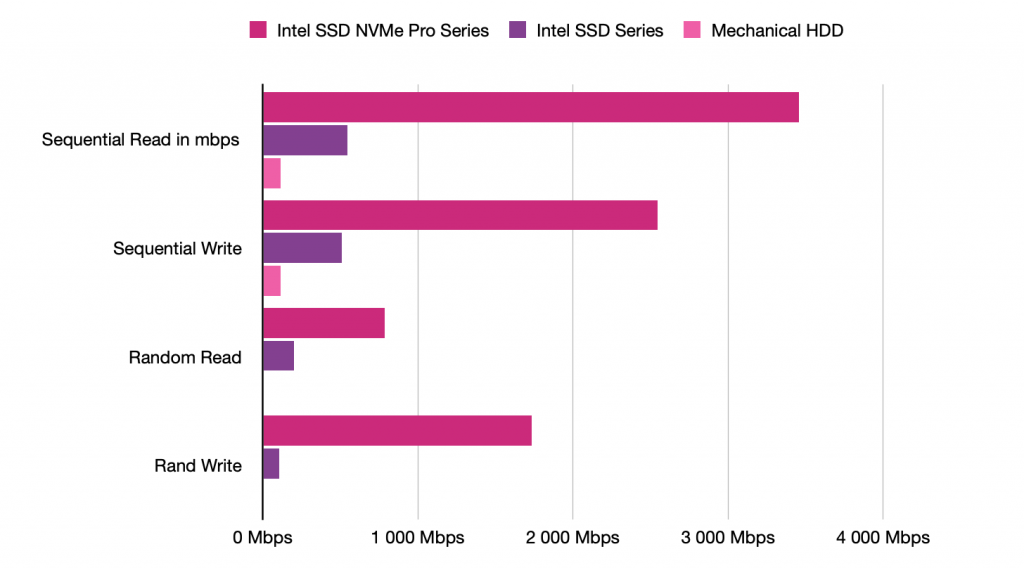
Results are expressed in Megabytes per Seconds – the higher the better
With such performance on display disk wise, we guarantee top of the line performances. All our servers are backed up with multi CPU at least displaying over 20 cores. Combined with DDR4, and SSD NVMes, we can proudly announce we are powering our web hosting users with the top of the line hardware which delivers outstanding performances. Such horse power is at the service of your website.
II) The Web Server: LiteSpeed VS Apache VS NGINX
The next stone of building a web hosting service is to choose a web server technology. The web server is the backbone of a server delivering websites content.
To set a context, the pitfall of a shared web hosting is that is generally a dense environment with unpredictable traffic spread. (as opposed to a website with predictable traffic topology.)
From a provider perspective, the stake for a flawless experience is to opt for a technology that copes with the density while delivering maximum performances. We chose LiteSpeed which we continuously tested over and over. It features faster loading times and a far higher concurrent traffic handling.
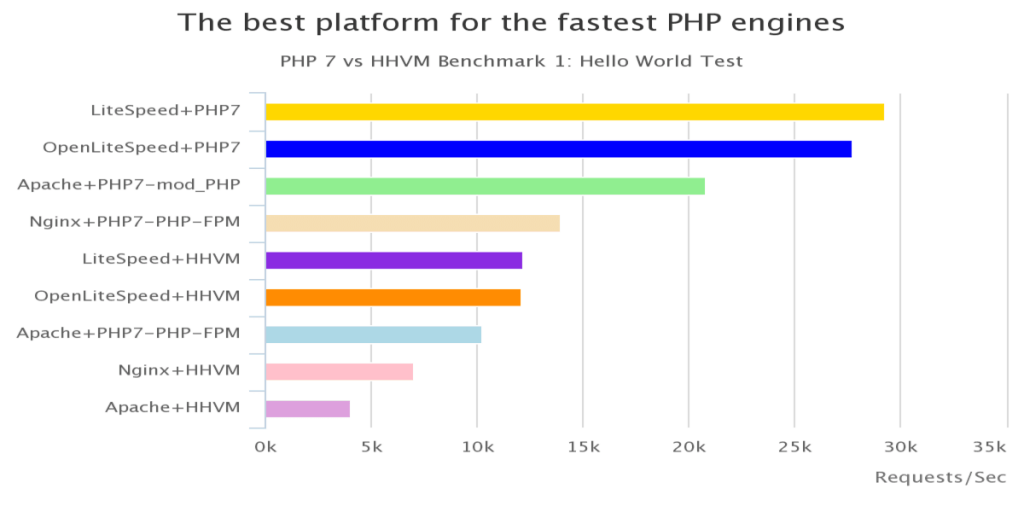
Number of Requests / Seconds before Crashing – The Higher the better
For the next simplified benchmark, we had opted for a real World sub studies featuring a WordPress ‘Hello World’ page. We narrowed it down to 3 web server technologies.
The benchmark below featured the HTTP/2 protocol while since then we have upgraded to HTTP/3 as detailed a little further below.
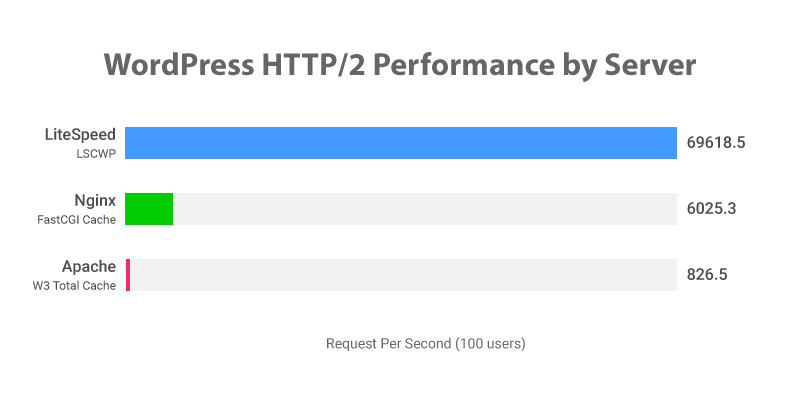
Number of Requests / Seconds before Crashing – The Higher the better
III) The Technical isolation & Server Density Policy.
As detailed earlier, the hardest part when choosing a Shared Web Hosting is to predict the available resources for all users and to guarantee the resource for each website claiming it. Shared hosting suffers from a reputation from low cost providers or main stream ones without any server density policy.
Cloudlinux is the solution of choice when it comes to isolate each users. It introduces a flexible virtual environment to each website with a set of resources. Not only, it prevents from any users affecting another but it delivers in performances by making resources always available.
Not only, we do isolate our users with different resources pools, we do have a strict server density policy to reduce the risk of resource collision to the absolute minimal.
Along with some extended server enhancements made by our OPs team we are proud to offer a greatest stability insuring the maximum level of performances to any user.
IV) Technologies: HTTP/3 & Brotli & The Network
Once, the website is ensured to be shipped quickly, the shipping must also be fast. This is where the HTTP/3 protocol, Brotli Compression and the network are coming in.
Each servers come with a 1 GBPS Port Speed with over 20 directs world wide points of presence ensure a great peering with uncompromising performances.
Next the compression technology intervene when sending the web elements to a visitor. They are to be compressed first using an algorithm. Gzip is the industry standard and yet it isn’t the most efficient as per the benchmark below.
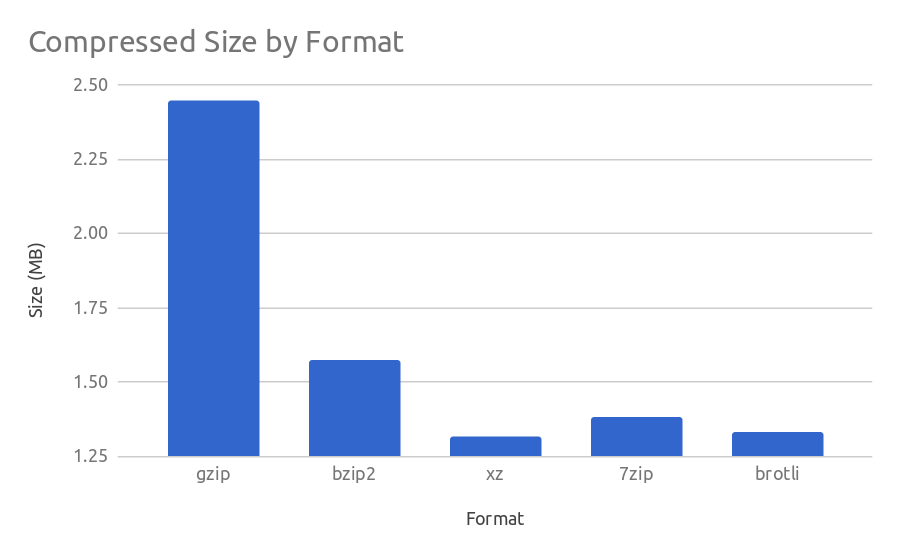
Compression Final Size – The lower the better
While bzip2, 7zip & xz are general utilities compression technologies which are widely spread among desktop users. A web server may feature either gzip or brotli compression. We have retained Brotli due to clear unmatched compression performances.
The effect is just very direct on the loading time. Indeed, it divides almost by 2 the size of any content served from your website to your visitors.
Then, upon a visitor page request, a socket is initiated through the HTTP/3 protocol. It is the latest protocol standard delivering optimal performances from servers to browsers.
Here is a benchmark showing the spread of loading time across the different protocols using different sized websites.

Website Loading Time Spread – The Lower the Better
Source: RequestMetrics
The performance gain is amazing and the spread in loading time is kept minimal. The leap forward using HTTP/3 is major and the gain for the loading time of your website is phenomenal.
V) Premium FastPath Caching System
This part is essentially made for WordPress users. The cache is the process of saving a static version of the website which is normally generated dynamically. It means that without the cache, the server must calculate and generate the page. By essence, it remains far slower and not quite efficient as mostly the page served are the same from one visitor to another.
A caching system enhances drastically the performances of a website by preventing this server side calculation to generate a page. The server will serve a static pre saved content which would rely mostly on the network and the level of compression.
For more advanced users, the caching system also decrease the TTFB drastically (Time to first byte).
Here is a benchark of the different technologies. LSWS stands for LiteSpeed.
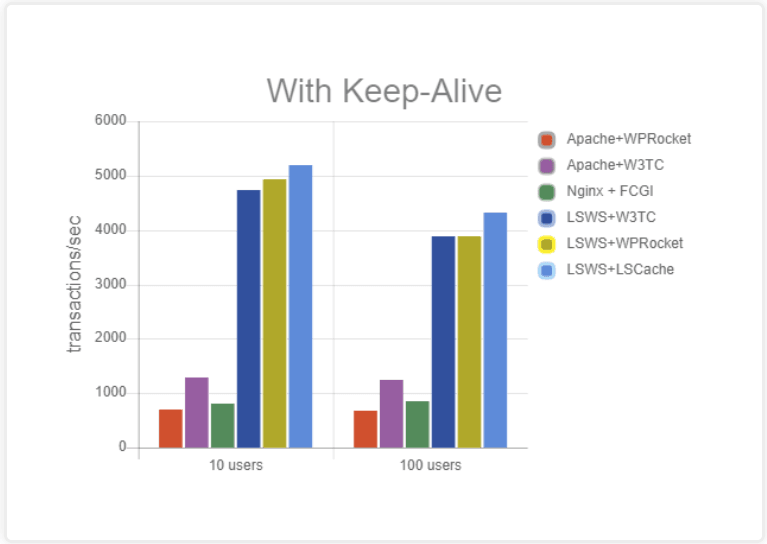
Number of transactions per seconds sorted by concurrent connections. Higher the Better
If you would like to gain further insights on the LiteSpeed Cache results, you may refer to the case study below where we achieved a loading time of 172ms on a WordPress website.
Conclusion
In a nutshell our web hosting solutions proudly feature just about everything there is to maximise the performances of your websites wise while insuring a resource availability integrity. That’s a guarantee we are able to bring to our clients using:
- Top of the Line Hardware with the fastest disk technology
- Fastest Web Server Tech for dense environment
- True Resources Isolations and a strict density hygiene
- The whole shipped on a fast network at a minimal compressed size on the latest browser communication protocol
Probably, it is more performance for your daily needs but we are quite excited about it.
If you aren’t yet a client and you would like to benefit from it all, you may use the coupon 60HOSTINGOFF which would give you 60% Off on your first month on any web hosting packages. You would benefit from a free transfer and a 30 Days Moneyback guarantee. What are you waiting for?




